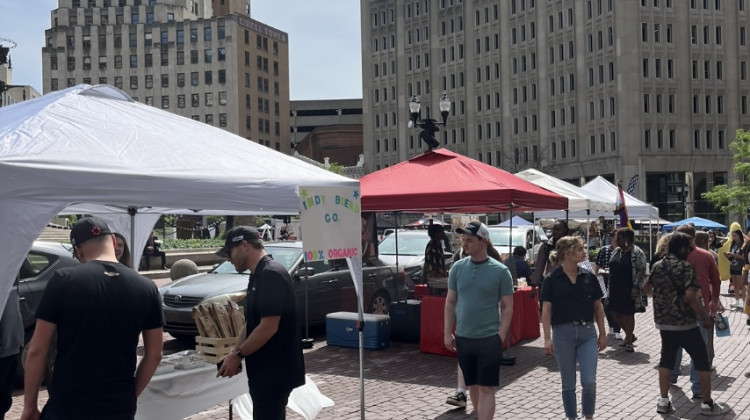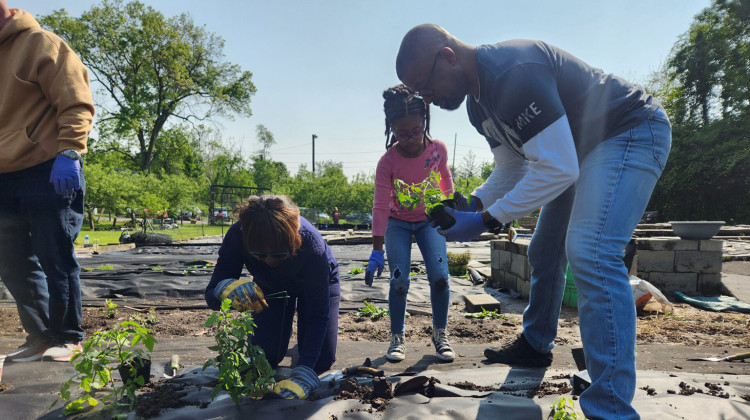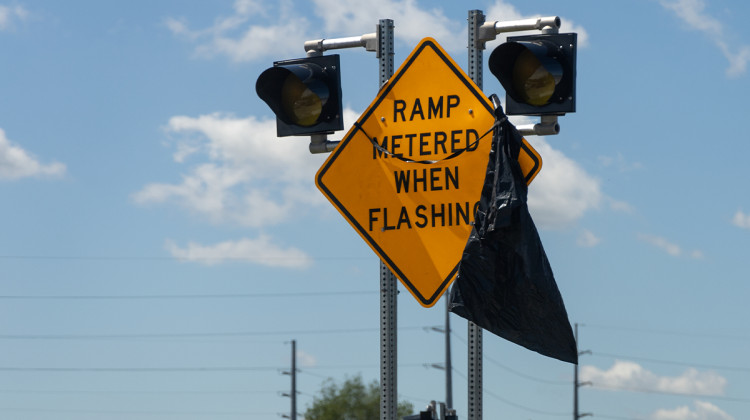
When the pandemic hit in 2020, Indianapolis restructured its food policy efforts into a new agency under the Office of Public Health and Safety.
Scott Warman / UnsplashEquitable food access, a movement in Indianapolis, seeks to get healthy, affordable food to people who need it. But an estimated 200,000 residents are still in need.
WFYI policy editor Jill Sheridan has covered the issue for years, so our reporter Ben Thorp sat down with Sheridan to talk about different players in the movement, why the problem persists, and what she's watching for in 2024.
Ben Thorp: Jill, Indianapolis has dealt with the problem of so-called food deserts for years. What does this mean today, and what work has the city done?
Jill Sheridan: Food deserts, areas where residents have no convenient options for affordable and healthy foods, especially fresh fruits and vegetables, have plagued the city for years.
While the term food desert has shifted a bit, I think people understand the core issue of equitable food access disproportionately impacts some neighborhoods more than others, and the connection between healthy food access and health disparities.
I spoke with Dr. David Hampton, executive director of LISC, about the roots of that inequity. LISC is a nonprofit partnered with the city and others on an equitable food access initiative.
"Food apartheid, supermarket redlining. These are historical, you know, injustices that have persisted. And every effort is designed to sort of offset some of the long lasting effects that are pervasive that really create the food insecurity and we when we talk about food insecurity, food insecure means, you know, one meal a day is not enough if you don't know where your next meal is coming from. That's a crisis, right?"
Thorp: So where are the Indianapolis neighborhoods most impacted by a lack of access to healthy food?
Sheridan: It’s the same neighborhoods that struggle with other disinvestment issues. Financial deserts, lack of green space, safe infrastructure. Neighborhoods like the far east side, the near northeast side.
To couple this issue, there were a number of full-service grocery stores that closed in the mid 2010s in Indianapolis. The loss of Double 8 stores in 2015, and then two years later Marsh closed all of its stores.
Those stores served many underserved communities for decades. Those decisions were market driven, and it’s proven hard to incentivize full service grocery stores to move into neighborhoods that have been disinvested in.
Thorp: So what has the city done to close some of these neighborhood gaps and help people connect with affordable food?
Sheridan: When the pandemic hit in 2020, the city restructured its food policy efforts into a new agency under the Office of Public Health and Safety. The Division of Community Nutrition and Food Policy started out with a staff of two.
Now there’s more than a dozen on Director Milele Kennedy's team. Here’s Kennedy, when I visited her in the city-county building a few months ago, she explained how the changes have informed recent moves.
"We realized right off that there were some pretty significant gaps in services and how we reach residents. And so 2020 showed that we needed to go back to the drawing board as partners within the feed system, and look at how we can better serve our residents."
So they targeted specific zip codes that lacked access and included many of those same neighborhoods that have been left behind in development and opportunity. They found that transportation is an issue, and so implemented the Lyft partnership where residents can get one dollar rides to the grocery store.
They identified local corner stores that could scale up to become more full service grocers in neighborhoods. They also invested in urban agricultural programs and are partnered with more than 40 local growers. Here’s Kennedy again.
"It's really about understanding what the neighborhood needs, what residents need, what kind of food they want, thinking about that culturally relevant food, but also, how do they want to receive it?"
Thorp: Has it made an impact? Have there been new grocery stores open up in Indianapolis?
Sheridan: There have been new stores, but the majority are not in areas that need them.
One grocery store that opened last year stands out. Indy Fresh Market is a Black owned local market in the near northeast side neighborhood that was a food desert. Michael McFarland and Marckus Williams saw this need, and partnered initially to open a convenience store.
In 2021 they connected with the city, Cook Medical and community development groups through an initiative led by Cook to improve quality of life in the community through the development investment. The new $2.5 million full-service grocery opened last year and sits right on 38th St where IndyGo’s Purple Line is being built.
Marckus talked to me about his experience, and how he felt other partnerships, individuals and neighborhoods needed to put their heads together to find permanent, local solutions.
"You have to step up, you have to be courageous for your community. I wish a lot of other people would think like this, you know, make the city a better place, you know, I mean, we can help out as much as we can. And just trying to make the city a better place to live."
Thorp: So a lot of work still to do. What efforts are you watching in 2024?
Sheridan: I’ll be interested to see urban farming programs grow, and if we’re able to incentivize more grocery stores to open in neighborhoods in need.
 DONATE
DONATE








 View More Programs
View More Programs

 Support WFYI. We can't do it without you.
Support WFYI. We can't do it without you.